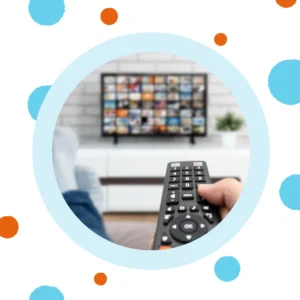
Signs You Need New Hearing Aids
Why Your Ears Might Be Crying Out for an Upgrade (Literally) Let’s face it. We all hang on to things a little too long sometimes.

Table of Contents
ToggleAt Injoy Hearing, we know this journey can be frustrating. We also know it can be life-changing. Here’s your roadmap for adjusting to your new hearing sidekicks like a seasoned pro.
Glasses give you immediate clarity. Hearing aids? Not so much. That’s because your brain has to reboot its hearing software. Sound pathways that have been on vacation are suddenly back to work, and your brain’s not thrilled about the overtime.
According to a PubMed study, auditory rehabilitation involves your brain relearning how to filter and prioritize sounds. This doesn’t happen overnight. But with the right steps, it can happen faster than you think.

Adjusting to hearing aids isn’t a one-and-done deal. It takes commitment. Here are five things you absolutely need:
Compare popular hearing aids like the Starkey Edge AI vs. the Phonak Sphere Infinio.
Everyone adjusts to hearing aids at a different pace, but a weekly guide can help you stay on track. This progressive timeline walks you through building confidence and skills with your hearing aids over the first month—and sets you up for success.
Your mission? Get used to having something in your ears and hearing all sorts of sounds again.

With your brain warming up, it’s time to add more real-life activity.
Time to leave the bubble and see how your hearing aids handle the real world.
Explore how to exercise with hearing aids.
You’re well on your way to becoming a confident hearing aid user. Time to go all in.
Remember: every day you wear your hearing aids is a win. And if you purchased your devices from Injoy Hearing, we’re here to support you with fine-tuning, check-ins, and expert advice along the way.
New hearing aid users often report being overwhelmed by background noise. That’s normal. You’re hearing the world in HD after years of lo-fi.
To manage it:
If the overwhelm doesn’t fade, that’s a good sign your devices may need fine-tuning.
Your ears may deliver sound, but your brain does all the heavy lifting when it comes to understanding it. That’s why hearing aids require more than just physical wear—they require mental work. Like learning a new language or skill, the more practice you give your brain, the faster it adapts to the new soundscape.
Hearing loss causes the brain to reduce activity in sound-processing regions. Once hearing aids start delivering sound again, these dormant pathways are reactivated. But reactivation takes effort. Your brain needs time to relearn what’s important, what to ignore, and how to interpret subtle auditory cues like tone and direction.

Here are some smart ways to support your brain during this re-learning phase:
Find out more about hearing aid apps.
Training your brain is just as important as wearing your hearing aids. Stay consistent, curious, and patient. Over time, your hearing will feel more natural, and you’ll rely less on lip reading or guesswork.
Let’s get real—wearing hearing aids for the first time can feel like your ears joined a rock band without asking you first. You’re not imagining the weirdness. That sensory overload, strange echo of your own voice, and that little itch in your ear? Totally normal.
Here are the most common symptoms new users report—and what to do about them:
Your brain is suddenly working overtime to process sounds it hasn’t heard in years. Give it a break. Start slow and build up your daily wear time. Short breaks are okay, but don’t give up completely.
This often happens during the first few days of adjustment. The added effort of listening can cause strain. Hydrate, rest, and talk to your hearing care provider if it persists.
Your brain used to filter out the hum of appliances and rustling papers. Now it’s relearning what’s important. This overload usually fades within the first couple of weeks.
Like voicemail-weird. You’re not used to hearing yourself clearly. The more you wear your hearing aids, the more natural your voice will sound.
Hearing aids take up space your ears aren’t used to. If the itch doesn’t stop after a few days, your domes or shells may need adjusting. Don’t suffer—reach out to your hearing care provider.
This can be caused by poor fit, earwax, or positioning. If adjusting placement doesn’t help, your devices might need fine-tuning.
Don’t be surprised if you feel a little off. This is a major change. You’re not just hearing more—you’re learning how to interpret and manage it all again.
Tips to ease the transition:
Remember, your brain is adapting to years of lost sound input. These discomforts are part of the rewiring process—and they are temporary.
If any of these symptoms last longer than a couple of weeks or interfere with daily life, contact your hearing care provider. And if you purchased your hearing aids from Injoy Hearing, our remote care team is ready to help fine-tune your experience.
You’re not alone. You’re adjusting. And every step forward is one closer to hearing the world as it’s meant to be.
Understand more about sensorineural hearing loss treatment.
Your hearing aids are tiny computers that live in your ears. And like any tech, they need care to stay sharp, safe, and working well. Daily maintenance isn’t just about hygiene—it’s about performance and longevity.
Here’s how to keep your hearing aids clean, comfortable, and capable:
Use a soft, dry cloth. Avoid wipes with alcohol or chemicals.
Use the brush that came with your hearing aids. Always brush outward, not inward.
A wax pick or loop can gently remove buildup. Wax is the #2 cause of hearing aid failure, right after dead batteries.
If your device uses disposable batteries, this preserves battery life and allows moisture to escape.
If you live in a humid climate—or sweat a lot—a dehumidifier or drying case will be your best friend.
If your hearing aids are rechargeable, place them in their charger every night to start fresh the next day.
Never wear hearing aids in the shower, pool, or sauna. And definitely don’t clean them with household sprays or wet cloths.
Dogs love to chew on hearing aids. And extreme heat can fry circuits. Store them in a cool, dry place.
Look for cracks, discoloration, or hardened parts. These components may need periodic replacement.
These tiny parts protect the inner workings of your hearing aids. Swap them out regularly—your hearing care provider can show you how.
Sticking to this routine keeps your hearing aids functioning like they should. The better you care for them, the better they’ll care for you.
On average, the adjustment period takes one to three months. But with daily use, some users feel comfortable within two weeks. Think of it like starting a new workout routine. At first, you’re sore and cranky. Then you feel amazing.
Factors that affect adjustment speed:
Talk to someone who’s been through it. Ask questions. Share frustrations. Most importantly, talk to your hearing care provider. If something doesn’t feel right, don’t tough it out. Adjustments are part of the process.
If you bought your hearing aids from Injoy Hearing, you can reach our licensed professionals for remote fine-tuning, troubleshooting, and personalized advice.
We make hearing aids simple, affordable, and supportive. When you order from Injoy Hearing, you don’t just get premium devices—you get expert guidance, fast delivery, and adjustments from licensed providers who know what they’re doing.
We offer:
Ready to actually enjoy your hearing aids? Contact Injoy Hearing today. We’ll help you get comfortable, confident, and back to hearing the life you love.

Why Your Ears Might Be Crying Out for an Upgrade (Literally) Let’s face it. We all hang on to things a little too long sometimes.

Invisible hearing aids sound like a dream. No wires. No clunky parts. Just clear sound and total stealth. But here’s the catch: the very thing

And Why It Pays to Act Before August 1 You’re shopping for hearing aids. Doing your research. You’re finding some great prices on high-tech, modern

Wearing hearing aids is like owning a high-performance car. Sure, it runs fine on its own. But once you get those sleek upgrades—spoiler alert: accessories—it
Injoy specializes in crafting custom Phonak hearing aid solutions tailored to the unique hearing needs of our patients. With a team recognized as the best in the business and decades of experience in helping people nationwide, we’re dedicated to improving your hearing and, consequently, enhancing your quality of life.
To start your journey towards better hearing with confidence, Injoy is proud to offer a 30-day risk-free hearing aid trial. This allows you to experience the difference our Phonak hearing aids can make, ensuring they meet your expectations and fit your lifestyle perfectly.
Improve your hearing and improve your life today by contacting Injoy to learn more about our risk-free trial!

Need hearing aids? Explore our range of hearing aids and discover the best option for your lifestyle and Unique Hearing Needs.
Are you a current patient with us? We're here to help with any adjustments, repairs, or support you may need.